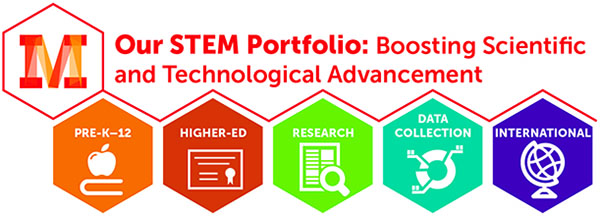National achievement data show that elementary school students in the United States, particularly those from disadvantaged socioeconomic backgrounds, have weak math skills. In fact, data show that, even before they enter elementary school, children from disadvantaged backgrounds are behind their more advantaged peers in basic math competencies.
A variety of approaches to improve student math achievement have been studied. However, there is little rigorous research evidence on the effects of different curricula, particularly at the early elementary level where a small number of curricula dominate math instruction.
A variety of approaches to improve student math achievement have been studied. However, there is little rigorous research evidence on the effects of different curricula, particularly at the early elementary level where a small number of curricula dominate math instruction.
To fill the knowledge gap, Mathematica examined whether some early elementary school math curricula are more effective than others at improving student math achievement in disadvantaged schools. We compared four elementary school math curricula that use different approaches to instruction and are widely used in the early elementary grades. These curricula were selected for the study through a competitive process. The curricula are as follows:
- Investigations in Number, Data, and Space, published by Pearson Scott Foresman
- Math Expressions, published by Houghton Mifflin Harcourt
- Saxon Math, published by Houghton Mifflin Harcourt
- Scott Foresman-Addison Wesley Mathematics (SFAW), published by Pearson Scott Foresman
Researchers recruited 111 schools from 12 districts to participate in the study for at least one year. The study team randomly assigned the four curricula to the participating schools within each study district. Though not a representative sample of all elementary schools in the United States, the study schools were dispersed geographically and in areas with various levels of urbanicity. The participating schools also served a higher percentage of students eligible for free or reduced-price meals than the average elementary school.
The study involved intense data collection during the 2006–2007, 2007–2008, and 2008–2009 school years. Researchers administered standardized tests to students, surveyed teachers, observed classroom instruction, observed teacher curriculum training, and collected student demographic information.
The first two study reports (Agodini et al. 2009 and Agodini et al. 2010) present the relative effects of the curricula after one year of curriculum implementation. New results (Agodini et al. 2013) present the relative effects of the curricula on student achievement after two years of curriculum implementation. These second-year effects are based on 58 of the 111 schools.
After one year (by the end of 1st grade), students taught with Math Expressions and Saxon Math made greater gains in achievement than students taught with Investigations in Number, Data, and Space and SFAW. After two years (by the end of 2nd grade), Investigations students continued to lag behind Math Expressions and Saxon students, while SFAW/enVision students caught up to Math Expressions and Saxon Math students. Therefore, Math Expressions, Saxon, and SFAW/enVision improved 1st-through-2nd-grade math achievement by similar amounts, and all three outperformed Investigations.





